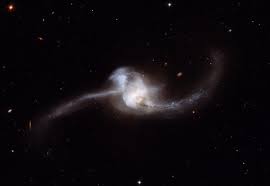In our galaxy (group of stars), there are an estimated two lakhs of stars including our Sun. Still why is the night sky dark? The German astronomer, Kepler, asked this question 400 years ago. It came to be known as Kepler’s paradox. The answer is emerging only now! The answer will reveal the complexity of the very nature of the Universe.
Surely, the sky becomes dark not because the Sun has set, for it would look different to a space traveller. Over the centuries, several answers have been proposed: absorption of starlight in the interstellar medium, hidden stars, a dark cosmic wall, stars including the Sun being young, expanding Universe and insufficient energy in the stars. Two ideas have been helpful in solving the puzzle.
One is the speed of light, some 3 million km per second. And the other is the finite age of the Universe: the idea that it emerged 13.7 billion light years ago. Given these finite measurements,....

